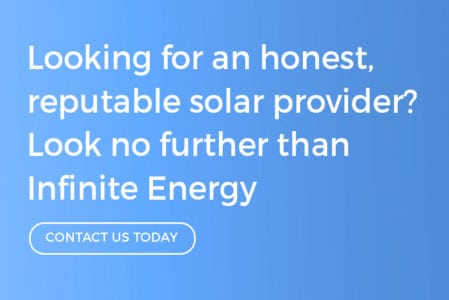What is the difference between the solar rebate and solar feed-in tariffs?

If you have started doing research about investing in solar power for your home, then you may have started getting confused with information overload! There is a wealth of information out there, about who is the best installer, what are the best brands, and how to make sure you are getting the most saving out of your solar power system. And depending on where the information is coming from, it may conflict with our information you have read – so its no wonder that many of our customers have found the process confusing!
One source of confusion for many is trying to understand what the solar rebate is and how this differs from the solar feed-in tariffs that are offered by some states in Australia. This article will help to clarify the differences between the two incentives and how they will affect you.
What Is the solar rebate?
While this subsidy is commonly known as the “solar rebate”, it is technically more of a discount as you generally receive the value of the subsidy as an up-front discount when you buy a solar power system, rather than receiving money back after you purchase your solar power system.
This subsidy is based on Small-scale Technology Certificates (STCs), which have a value that varies with market conditions. The number of certificates an eligible solar power system can receive is based on its solar panel capacity, where in Australia it is installed, and the year the solar power system was installed. View our blog here for how to calculate STCs or you can also use this STC calculator provided by the REC registry.
Once your solar power system has been installed and the STCs have been registered, they are sold to recover a portion of the cost of purchasing your solar PV system. Given the complexity surrounding creating and selling STCs, it’s common to assign the right to create the STCs to your solar provider, in exchange for an upfront discount off your solar power system price. Prices you see advertised for systems will most often include the rebate.
These incentives are set to reduce by around 6-7% on January 1st every year until 2031 when they are phased out completely, so the sooner you invest in a solar power system, the more you’ll save on the upfront cost.
Other solar rebates and incentives
While the solar subsidy from STC applies to solar power systems sold across Australia, each Australian state and territory offer their own varying solar rebates and incentives. These rebates and incentives differ substantially from state to state, and some states don’t offer any additional incentives above the STC discount.
To find out any additional discounts or incentives you may be eligible for, learn more about what is applicable to your state here.
What are solar feed-in tariffs?
A feed-in tariff (FiT) is a payment a household with solar installed receives for the surplus electricity generated by their system that is fed back into the grid.
It is your electricity retailer that pays this incentive to you, not the government so how much you receive for your feed-in tariffs (and if you receive anything at all) will depend on your electricity provider.
When feed-in tariffs were originally introduced in 2008, they were very generous to promote uptake of solar panels, up to 60c in some states! The solar rebate combined with feed-in tariffs and climbing electricity prices motivated many Australian households and businesses to invest in solar power.
Unfortunately, the days of high solar feed-in tariffs are long gone, and most feed in tariffs are now between 3-22 cents depending on your state and your electricity retailer.
Is solar still a good investment?
While both the solar rebate and feed in tariffs have reduced substantially since their introduction, solar is still a great investment, you may just need to calculate your savings a little differently. While you may not get as much money off your investment upfront or receive as much for your excess power as those who invested in solar power 10 years ago, the size and efficiency of solar power systems have improved substantially in that time.
Instead of calculating your savings from your solar rebate or feed in tariffs, it makes more sense to instead calculate your savings based off how much electricity your solar power system has offset – that is, how much less power you are needing to buy from the grid since you have had solar panels installed. You can learn more about how to calculate your real solar savings here.
If you would like to learn more about solar rebates and feed in tariffs, or to find out how much investing ins solar power could save you, please call us on 1300 074 669 or request a call back for a free, no-obligation assessment with one of our energy consultants.


